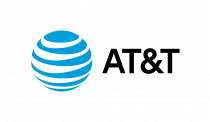We don’t know exactly what shape the jobs of the future will take. But we do know that there is currently a gap in the available workforce and the skills that companies need. In fact, nearly 40 percent of employers say* they can’t find the talent required to fill their open positions. That’s just one of the many important reasons that schools need to collaborate with the private sector to close the skills gap.
“Leading the Future for Students, for Educators, and in Technology,” a new guide from AT&T, shares five inspiring ways schools are doing exactly that. Here’s a sneak peek at some of the strategies highlighted in the guide.
1. Begin workforce development in K–12
While we’ve traditionally thought of “workforce development” in terms of the currently employed, development of critical skills can emerge as early as kindergarten. Teacher Conor Corey uses Khan Academy to nurture workforce skills in his students at Willow Dale Elementary. “Kids born today will have jobs that don’t even exist yet,” says Corey. “Students will need to develop skills beyond basic literacy—skills that can help them compete in the global economy.” Read the full story>>
2. Start a mentoring program
Mentoring is proven to have a positive impact on students’ efficacy, confidence, and decision-making skills. Girls Who Code is a national initiative that exposes high school girls to computer science and jobs in technology. The program features a strong mentoring component. “Mentoring is important not only for a young woman of color but women in general because we are heavily underrepresented in the tech industry,” says participant Anah Lewi. Read the full story>>
3. Promote equity
Workforce preparation efforts will only be successful if special attention is paid to underprivileged and minority populations in schools. “If a student is 14 and they’ve never been in a school before, you can’t give them the same type of curriculum designed for the average seventh or eighth grader,” says Christine Livingstone, a teacher at Brogden Middle School in Durham, North Carolina.
To support the kind of hands-on learning Livingstone knows her students need, she relies heavily on DonorsChoose.org. This program connects public school teachers with donors willing to support creative projects. To date, Livingstone has had nearly 300 projects funded, including ones that encourage kids to master coding and math skills. Read the full story>>
Learn more about these stories and other smart ways schools are collaborating with industry in “Leading the Future for Students, for Educators, and in Technology.”

